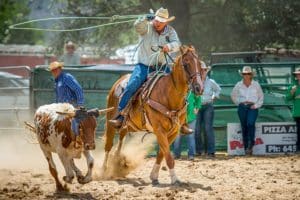Combating ‘Skin Crud’ on Horses
- Topics: Article, Grooming, Horse Care, Other Skin Problems, Skin Problems

Living outdoors and sweaty workouts predispose horses to a variety of skin conditions. Good horsekeeping goes a long way in preventing skin funk, but sometimes even the most diligent barn cleaning and grooming routines just aren’t enough. Here’s a look at how to identify, treat, and prevent skin crud on horses.
“Skin Crud” Defined
“Skin crud” is a catch-all term used to describe any skin condition in the horse that causes raised bumps, har loss, scaling, crusts, and or pus, said Susan L. White DVM, MS, Dipl. ACVIM. These conditions have a visual “ick” factor and can be itchy or painful for horses.
“Similar to the descriptive term ‘colic,’ which describes gastrointestinal pain in the horse and can be present from a number of different diagnoses, ‘skin crud’ can occur due to a variety of different causes,” she said.
Common Skin Crud Causes
In some cases, skin crud comes from within the horse; it can be caused by allergies or sensitivity to sun (also called photosensitivity), for example. Other causes, such as rain rot (characterized by small crusty bump), are caused by bacteria. Still other cases are caused by a fungus—ringworm (scaly, crusty patches of skin where the hair falls)—for instance. Environmental conditions can also result in skin crud; pastern dermatitis, commonly called scratches, usually is environmental in origin
Create a free account with TheHorse.com to view this content.
TheHorse.com is home to thousands of free articles about horse health care. In order to access some of our exclusive free content, you must be signed into TheHorse.com.
Start your free account today!
Already have an account?
and continue reading.

Related Articles
Stay on top of the most recent Horse Health news with

















